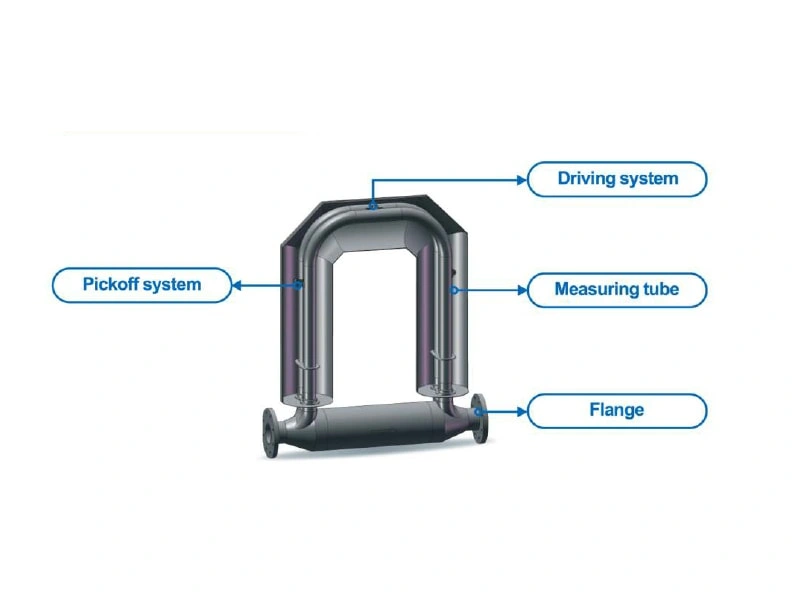Coriolis effect principle:
The Coriolis effect, also known as the Coriolis force, describes the deviation of a particle in linear motion within a rotating system due to its inertia relative to the linear motion induced by the rotation. The mass flow meter is a common application of the Coriolis force, in which the measured fluid is passed through a vibrating measuring tube. The flow of the fluid in the tube can be considered as straight line motion. The vibration of the measuring tube generates an angular velocity, and thus, the Coriolis force experienced by the fluid in the pipeline is solely determined by its mass and velocity. The product of mass and velocity yields the mass flow rate that needs to be measured. Therefore, by measuring the Coriolis force received by the fluid in the pipeline, its mass flow rate can be determined.



